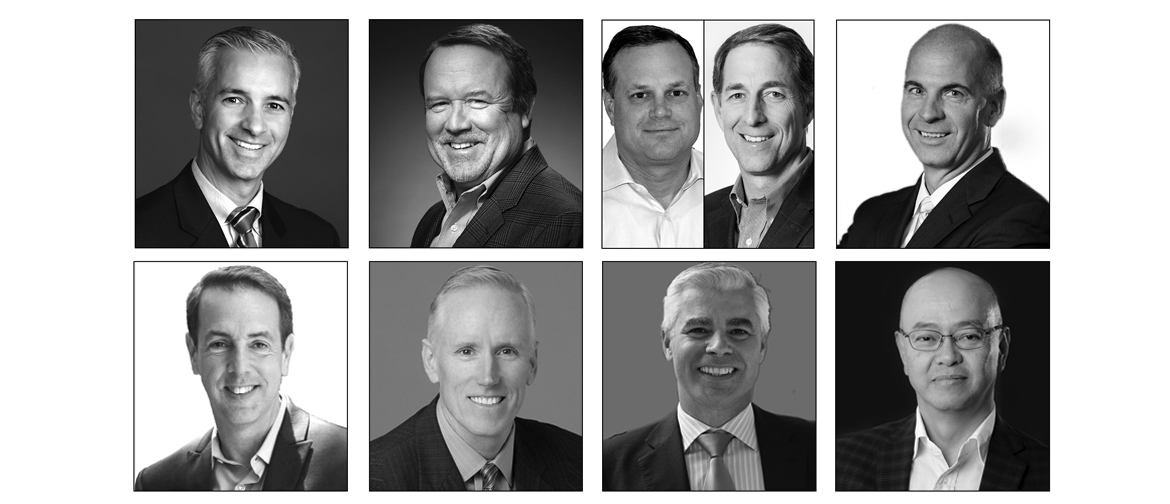In March of 2019, we asked a panel of executives from eight different imaging technology OEMs to identify the biggest threat(s) dealers are facing as they look to remain profitable in the future. The participants, and their titles at the time, included: Shinichi Yoshida, executive vice president and general manager, Canon U.S.A., Inc.; David Laing, vice president and head of iMPS Services Business, and John Whidden, vice president, U.S. Specialty Print Channel, HP, Inc.; Kevin Kern, senior vice president, Business Intelligence Services and Product Planning, Konica Minolta Business Solutions U.S.A., Inc.; Oscar Sanchez, president, Kyocera Document Solutions; Jim Coriddi, vice president, Dealer Division, Ricoh Americas Corporation Mike Marusic, president and CEO, Sharp Imaging and Information Company of America (SIICA); Bill Melo, chief marketing officer, Toshiba America Business Solutions (TABS); and Jim Morrissey, vice president, Document Technology Partners, Xerox Corp.
Here is what they said when asked what was the biggest threat dealers are facing as they look to remain profitable in the future?
Coriddi: It is critical for dealers to not remain stagnant as the business continues to change.”¯It is essential for dealers to constantly invest in their future, this includes people, processes, systems, training, to name a few.”¯Dealers have created strong relationships and trust with their customer base, but this is not the time to get complacent.”¯Clients need more in the form of managing their information, and dealers have to show they understand the new customer challenges and can deliver more types of solutions.
Kern: Inertia. What I mean by inertia is this: Things aren’t so bad right now. Everybody is making money. Why change, why take the risk? If I were a dealer, I would be looking for what changes I need to make to facilitate longer-term growth. The problem is when you’re making 40% aftermarket and cruising along, and you’re gaining market share and taking other dealers’ customers, it looks great, why change? So there’s the potential for inertia from preventing a lot of organizations from preparing for the future. It’s thinking things are great, our sales process works, our commission scheme works, and our pay scheme works, so why look outside and say we need to make some changes here to prepare for where we’re going? The future may be less reps and less technicians, but the ones you have are much higher paid on base salary and have much more technical expertise. There’s a lot of changes that will happen. What everyone needs is that heightened sense of awareness to ask where I am going and how am I going to get there if this changes.
Laing: HP sees the biggest threat to its partners is a willingness to change. Changes in the demographics of customers as they shift to millennials and Gen Z mean our partners will need to change the way they sell and support these customers. As digital natives, these new customers prefer to research, buy, and get service/support in different ways than the current customer base. Younger buyers prefer mobile and technology-driven approaches, instead of traditional face-to-face selling and phone-based support. They crowd-source device and service-provider recommendations via social media and on-line buyer reviews, instead of depending on face-to-face selling and demonstrations. They want internet chat or text messaging-based, not phone-based, support. They expect devices to be cloud-connected, internet of things, smart devices that enable remote, preventative service. They want their service providers to generate a quarterly report on what they did, without their knowledge, for them afterward. In summary, HP thinks changing workforce demographics, and those new buyers’ higher expectations of technology, will require successful partners to change their selling and support approaches more in the next 10 years than they have in the last 30.
Marusic: Complacency. There is so much change going on now that remaining still is your biggest threat.
Melo: In the immediate future, perhaps the biggest risk to dealer profitability is the failure to execute on the acquisition of their customers’ print volumes. Dealers need to carefully evaluate entering new lines of business, especially as these will require significant financial resources and management attention.
Morrissey: One main threat is dealers struggling to bring in talent that can embrace the technology.
Young talent needs to be able to transform the dealer’s value proposition to address customer needs. If that doesn’t happen, prices will continue to be lower until dealers are ready to sell.”¯The other threat is the wide-ranging price of products from dealer to dealer, which is all dependent on their volume and cash position. I do not see the small dealers competing unless they can run very lean. The challenge: Customers want support with their systems and that takes investments””without that, venture capitalists enter the picture.
Sanchez: I believe the (American) phrase is “old habits die hard.” The resistance to adapt to the changing market or taking a much-needed risk into the unknown is the biggest threat. I have said several times in my career, you can’t experience positive change without taking great risks.
Yoshida: The two biggest threats I see for our dealers are hiring a diverse, young workforce that understands the industry, specially software solution business and retaining them, and outrunning declining volumes and click rates by selling more units to offset that decline is another challenge.


